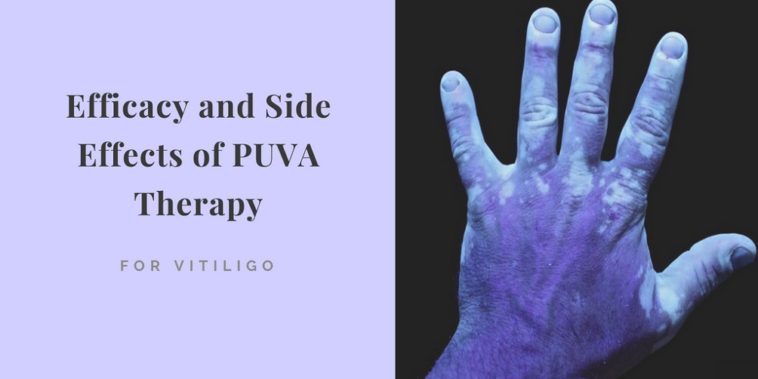PUVA (Psoralen and Ultra-Violet A) Therapy is one of the alternative methods to treat segmental vitiligo. The potent melanocyte stimulant is currently going obsolete choice due to poor outcome and limited future scope. It is a medical procedure, which involves exposing vitiligo lesions to the ultraviolet light after application of Psoralen (a chemical compound that is mostly derived from Psoralea corylifolia).
Over the years, PUVA therapy has been considered a better treatment option for small white patches. While some people with extensive vitiligo respond well, the majority attain only partial pigmentation.
Hoe does PUVA Therapy work in vitiligo?
Though the exact mechanism is still speculative, PUVA is believed to induce repigmentation in the skin by varying mechanisms such as stimulation of melanogenesis, immunomodulation, and activation of growth factors.
Psoralens are photo-activators, so, combining psoralens and sunlight would cause sunburn. However, in the therapeutic setting, the amount of psoralen and the amount of UV-A is carefully controlled to attempt to rejuvenate affected melanocytes, avoiding sunburn at the same time.
Prognosis of PUVA Therapy for vitiligo
The PUVA method is most effective when vitiligo is limited to only one or two clearly defined patches. Many patients consider the therapy disruptive as it may require repetitive external applications of Psoralen. A patient is often asked to visit a healthcare facility for weeks to achieve desirable results. The degree of repigmentation achieved depends on the area affected, and the duration of the skin disorder. Some medications can be prescribed alongside the therapy to minimize allergic reactions.
Since PUVA therapy is often conducted in a healthcare facility, it becomes an expensive therapy. Depending on the depigmented area of the skin, therapy sessions are decided. Candidates for the therapy should be carefully screened and educated about the procedure. Various aspects of this therapy such as the cost, treatment time, side effects, probable permanency, and the possibility of recurring depigmentation should be discussed. Enough time and assistance should be provided to the patient and family members involved in the decision-making process.
Reported side effects of PUVA Therapy for vitiligo
PUVA Therapy has shown lesser (and milder) side effects compared to Narrowband UVB Phototherapy for vitiligo. However, many experience nausea and itching after ingesting the psoralen compound. However, these issues are generally resolved after the application of topical emollients. Long-term use of PUVA has been associated with higher rates of skin cancer.

